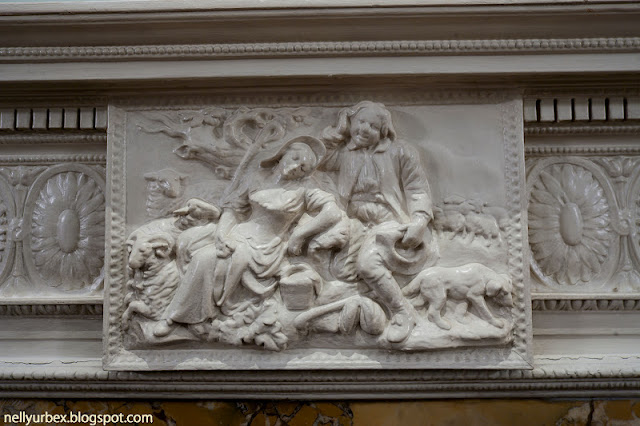<Click on any photo to view full screen>
Built circa 1719 by the mason Christopher Cass for a Mr Robert Chester who was a
director of The South Sea Company.
The Grade II listed building was passed down through the generations and across the family tree like any other country manor
and nothing interesting is documented there until the 20th century when the Special Operations Executive (SOE) set up a base there and in its final years was a hotel sitting in 80 acres with its own golf course
The rest of this report is extracts from an interview with one of the SOE workers (Stolen from the BBC)
"In the early years of the war, I, a young R.E. officer, was given the job by SOE HQ in Baker Street, London, of starting up and running a forgery unit, with the object of providing forged documents for our agents operating with the various underground Resistance movements in occupied Europe."
"We occupied the cellars of this country house, while above ground and in the surrounding countryside, Polish officers and NCOs were being trained with German weapons and plastic explosive to become saboteurs ."
"My staff originally consisted of just three Polish civilians, only one of whom spoke any English, who had probably been doing similar work in Poland before the war.
But with the recruitment of Sapper technicians from the RE Survey companies, a handwriting expert from New Scotland Yard,
an engraver from de la Rue the stamp and banknote printers and some additional machinery, we were able to get into production."
"We fully realised that agents lives were at risk who used our documents, so every effort was made to ensure that the latter looked really authentic.
To this end, no expense was spared, and even if only a couple of hundred identity cards for a job were required, we would think nothing of having tons of special board or paper made.
We faithfully reproduced all the imperfections on the original document that we had obtained from our agents, and had, at times, to age certain documents artificially to make them look genuinely old."
 |
| Translates as "Art is long, life is short"
|
"Certainly we were able to forge practically anything our agents brought back; but the job had also to have a less serious side at times."
"On one such occasion, the FANNYS at the adjoining Free French station had decided to throw a party, and we decided that for this, we would produce a couple of hundred copies of the then current five pound English banknote,
substituting Brigadier Gubbin's portrait and signature for that of the Governor of the Bank of England - as the banknote was only printed in black, this was easy to forge,
and during the course of the evening, we dropped the notes onto the dance floor from a balcony. The Brigadier was amused, but warned us to make sure none of them finished up in the hands of the Police!"




"We had to smile too, when, on another occasion, some of the Polish would-be saboteurs were sent out on a demolition exercise, when they were supposed to blow up a spare bit of railway line that was lying near the main London-Cambridge line.
With somewhat misplaced zeal however, they fixed the explosive to the rails on the main line itself, and blew it up, causing the line to be out of commission for half a day.
"In 1942, SOE HQ decided to experiment with the dropping of office-type printing machinery by parachute, in the hope that if this was successful,
these machines could be got to the Resistance to produce seditious literature on the spot and make things more difficult for the Germans."
"So, one bright, sunny, summer day found a circle of officers, including a number of 'brass hats' from London, gathered in a circle round the intended dropping zone in the grounds"
"I was one of those present, and standing next to me was a good looking young Scotsman dressed in a kilt; to our mutual surprise, we found that we had both been in the same class at Kelvinside Academy in Glasgow many years before the war, and before I and my family moved South.
I did remember his surname, Torrance, but before I could ask him to remind me what his Christian name was, the drop had taken place, and it was too late"






.jpg)


































